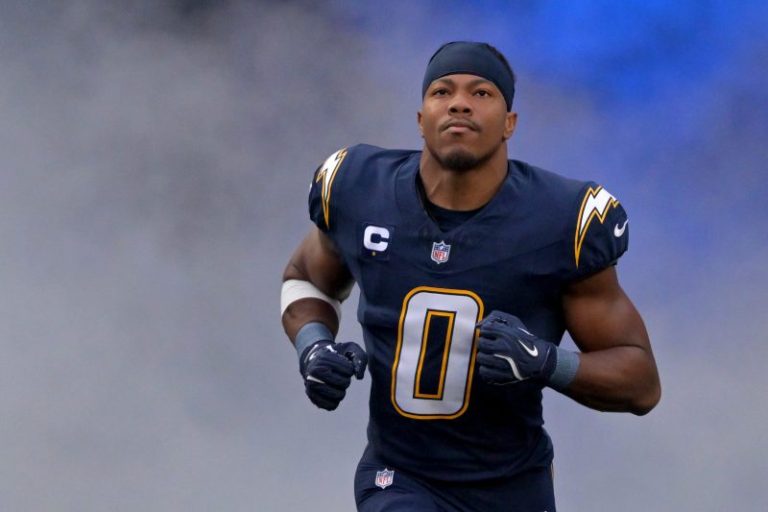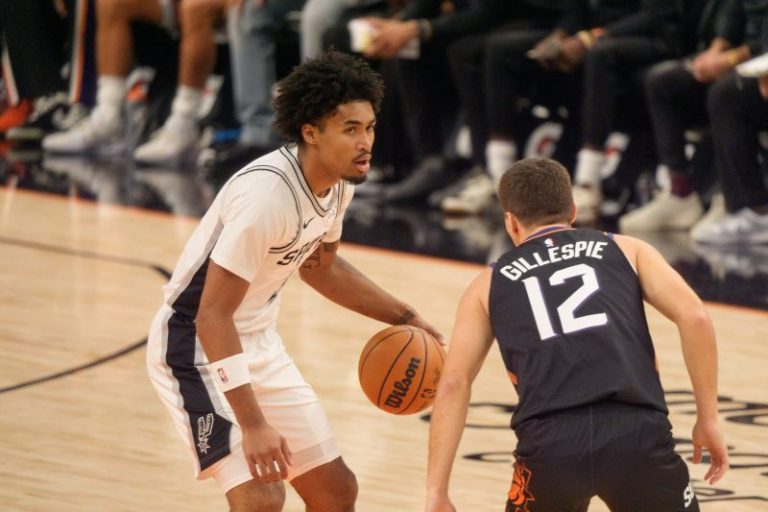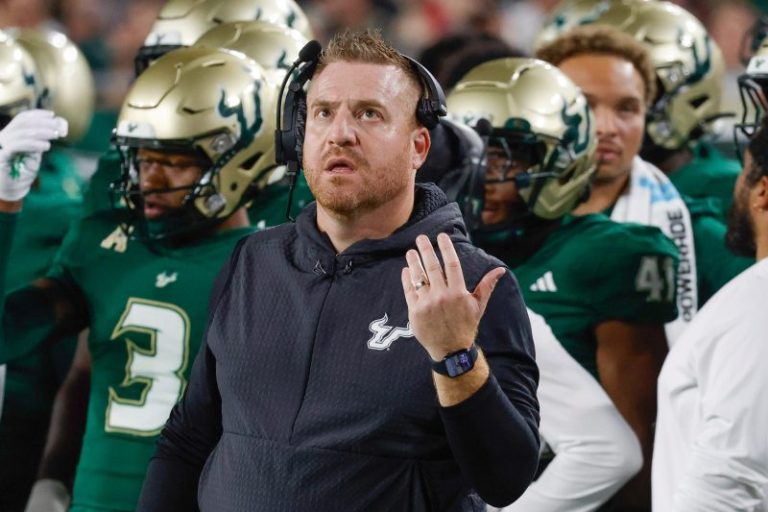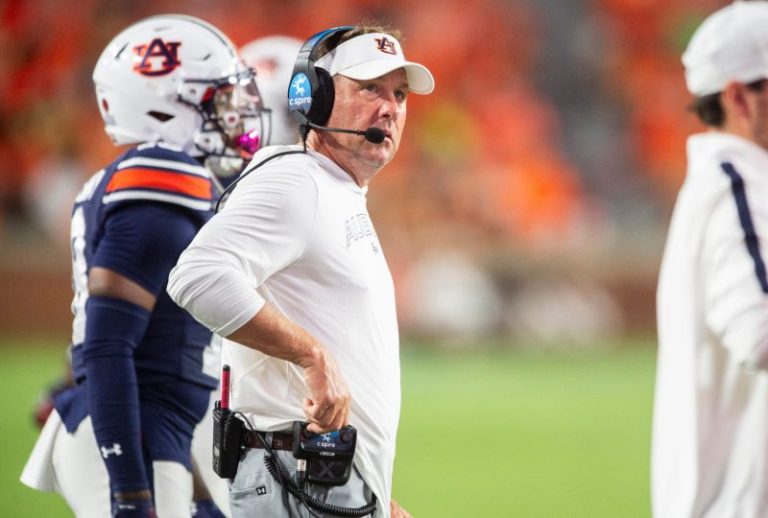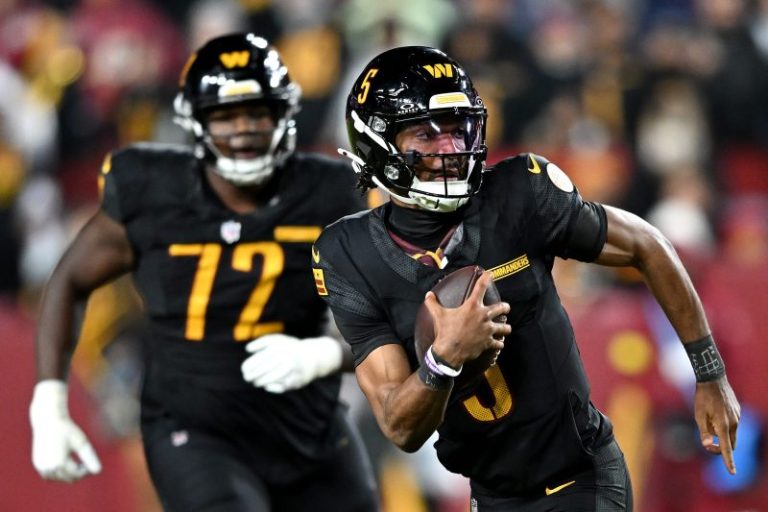The Washington Commanders finally pivoted from the franchise’s longtime racist nickname in 2020, landing on their new identity in 2022 after playing two seasons as the Washington Football Team. But on Sunday, they’re going to look an awful lot like the dominant squads from the Joe Gibbs glory years.
Washington will debut its new ‘Super Bowl Era’ throwbacks on ‘Sunday Night Football’ against the Seattle Seahawks, who will also don a classic look.
Marketed as ‘Fit for Old D.C.’ − a nod to the team’s fight song, which urges the team to ‘fight for Old D.C.’ − when the new/old uniforms were announced over the summer, the Commanders are set to wear what is basically the same look the team had while reaching four Super Bowls between the 1982 and ’91 seasons, winning the Lombardi Trophy three times during that span.
The burgundy pants, white jersey and burgundy helmet with three stripes down the center will certainly evoke memories of Gibbs, John Riggins, Joe Theismann, Doug Williams and many others. What’s missing will be the team’s former Native American head logo, replaced by the Commanders’ ‘W’ sigil.
“We are excited to celebrate Washington’s incredible history with these iconic, Super Bowl Era uniforms this season,” team president Mark Clouse said in a statement in July.
“Ever since Josh Harris and our ownership group acquired the team back in 2023, they’ve placed great value in finding ways to connect the past and present and honor those that made the burgundy and gold what it is today. These uniforms recognize the most successful era of our franchise – one that reflects a culture of excellence and encompasses many historical moments and special memories amongst our fanbase. Our coaches, players and the entire organization could not be more excited to celebrate our team’s legacy while creating new memories in these uniforms this season.”
The team’s other recent alternate features black jerseys and pants with the club’s signature burgundy and gold serving as trim, including for the District of Columbia’s flag (normally red and white) featured on the sleeve. The black helmet is also distinctive, with the gold “W” on the forehead and stars and bars of the D.C. flag in gold at the back. Each player’s jersey number was placed on the side of the helmet where the primary insignia usually goes.
While some embraced this darker version, other fans have complained the black motif made the club look too similar to the Pittsburgh Steelers. Washington most recently wore them during its Week 6 loss to the Chicago Bears.
The new alternate becomes the franchise’s eighth different uniform (not including various jersey-pants combinations) since 2020, when the murder of George Floyd compelled the team to drop its former nickname, which is defined by Merriam-Webster as an “insulting and contemptuous term for an American Indian.” Prior to 2020, many Native American groups and others had lobbied the team to scrap the name, but former owner Daniel Snyder told USA TODAY Sports in 2013 that, “We’ll never change the name. It’s that simple. NEVER – you can use caps.’However Snyder, a highly controversial and widely despised figure for nearly the entirety of his 24-year stint as owner, ultimately relented before selling the team under pressure to a group led by Harris two years ago for more than $6 billion.
Local reception to the Commanders nickname, which is meant to tie in with the region’s vast military community, has been lukewarm, many fans still wearing gear with the former logo or even the interim WFT garb instead. But the arrival of quarterback Jayden Daniels and head coach Dan Quinn in 2024 began a long-needed revitalization of the brand and organization, which will host the 2027 NFL draft on the National Mall.
When will the Commanders wear their throwbacks?
Nov. 2 vs. the Seattle Seahawks
Nov. 30 vs. the Denver Broncos
Dec. 25 vs. the Dallas Cowboys
Will Commanders’ throwbacks become Washington’s permanent uniform?
A broader reboot of the Commanders’ uniforms has been rumored, but it won’t happen soon. Special circumstances aside, the NFL requires teams to stick with uniform overhauls for five seasons − meaning the Commanders’ current look will likely remain through at least the 2026 campaign.
Harris definitively stated earlier this year that the club’s former name − many fans (and President Trump) prefer it even if it is a slur − won’t return. Quinn sparked a brief sensation last year by wearing a T-shirt featuring the contemporary W logo sprouting a feather similar to the one on the old emblem.
But Commanders will remain the nickname.
‘Now, in this building, the Commanders means something. It’s about players who love football, are great at football, hit hard, are mentally tough and great teammates,’ Harris said in February. ‘It’s really meaningful. That name is growing in meaning.
‘As far as rebranding and bringing our past – which obviously I grew up with, and all the Super Bowl championships – and our future together, you’re going to see us move back toward honoring our past and bringing it together with our future.’
What uniforms are the Seahawks wearing vs. Commanders?
In one of the better uniform pairings in a season full of them, Seattle is wearing blue throwback jerseys with silver pants and helmets − adorned with the franchise’s original logo − that it basically sported from 1983 to 2001.
This post appeared first on USA TODAY



